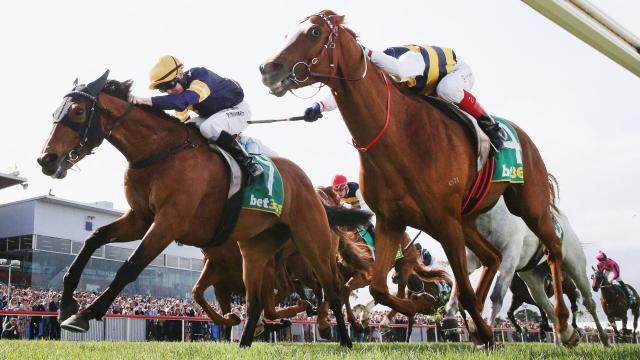A new study found that at least 45,000 Americans visited a major trauma centre with horseback-related traumatic injury during a recent 10-year stretch — meaning that horseback riding likely sends more people to the hospital than other sports like football, auto and motorcycle racing, and skiing. The results indicate that riders should be encouraged to protect themselves more often while riding, especially through wearing helmets, the researchers say.
Horseback riding, or equestrianism, is fairly popular in the U.S., though current estimates are difficult to come by. Despite its popularity, many people underestimate the risks of the activity, the study authors say. The team, based in Texas, decided to dig into information from the National Trauma Data Bank (NTDB), the country’s largest database of trauma-related hospitalizations, collected voluntarily from large trauma centres nationwide. They looked at NTDB data from 2007 to 2016, ultimately identifying 45,671 patients who visited a trauma centre with injuries diagnosed as horseback-related.
Of these, about 25,000 cases had complete-enough data for the authors to look more closely at. About 88% of victims were injured badly enough that they had to be admitted to the hospital for an inpatient stay, with the average length of stay being 4.46 days. About a third of injuries involved the chest, while roughly one-fourth involved the limbs and another fourth the head and neck. Thankfully, most people had little to no neurological impairment (88%), though roughly 3.5% did have severe impairment, and 1.4% had such severe trauma that they developed shock. Only 0.21% of patients died from their injuries, though 28% did require a stay in the intensive care unit. Interestingly enough, they also found no difference in how often men or women were hospitalized, which may undercut claims that women are more at risk to get hurt from the sport.
The raw numbers are almost certain to be an underestimate, since they don’t cover all trauma centres in the country, particularly smaller ones that serve rural or more isolated areas. But they do put the possible hazards of horseback riding into clearer context. Older, smaller studies have suggested that horseback riding is more dangerous than many other sports perceived as risky, like football and skiing, while others have found that horseback riding is associated with fewer injuries in general than the above two. But the new study, published this weekend in Trauma Surgery & Acute Care Open, seems to be the largest of its kind and is the first to rely on NTDB data.
Given all the available data, the authors say that horseback riding has a higher risk of hospital admission than football, skiing, and auto and motorcycle racing — a risk that study author Jeffrey Skubic, a trauma surgeon in the Rio Grande Valley area, hopes more people understand.
“Horseback riding is more dangerous than most people think,” Skubic told Gizmodo over the phone.
As a side note, Skubic gave the study a title that would be amusing to anyone who’s watched the show House: “Hearing hoofbeats? Think head and neck trauma: a 10-year NTDB analysis of equestrian-related trauma in the USA” (“hearing hoofbeats” is a common idiom in medicine, meant to remind doctors that most medical diagnoses are likely to be the commonplace horse, not the exotic zebra).
Head and neck injuries, unsurprisingly, were the most likely to result in longer ICU stays, days on a ventilator, and death. Other data has suggested that many people who get injured on a horse weren’t wearing helmets at the time, which would be especially dangerous for these injuries in particular. Helmets aren’t foolproof at preventing serious injury — the authors note the tragic and infamous case of Superman actor Christopher Reeve, who was paralysed from a horseback-related injury in the 1990s while wearing a helmet — but they do reduce its likelihood.
Though there have been efforts in recent years to improve the safety of professional riders, very few public health campaigns have focused on preventing injuries in those who ride them for fun or work, according to the authors. And more needs to be done to reach out to them, they say.
“Living in Texas, I see a lot of people riding horses, almost never with a helmet on,” Skubic said. “I just want horse riders to be aware of the risks, and to wear a helmet.
